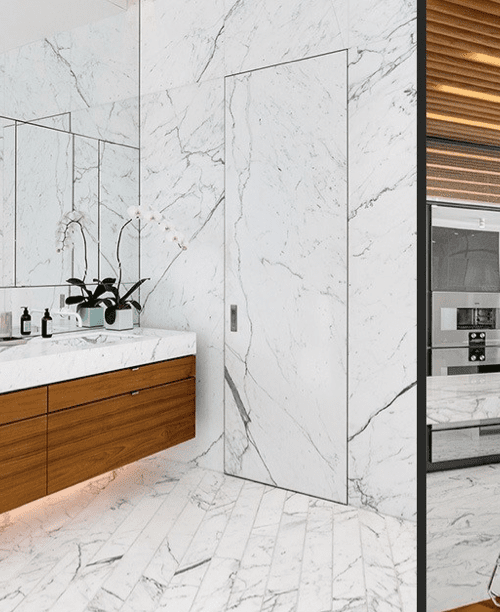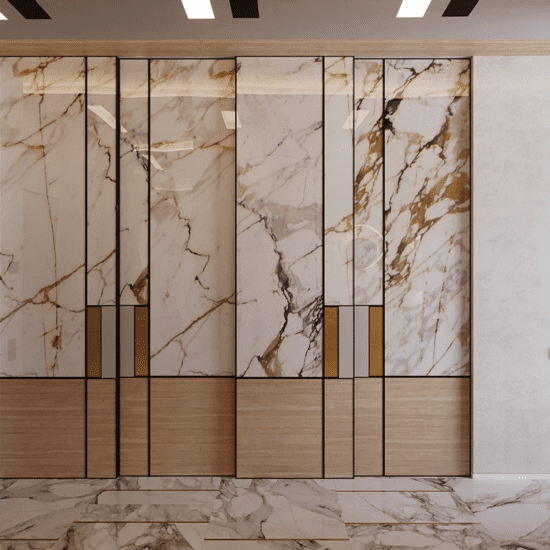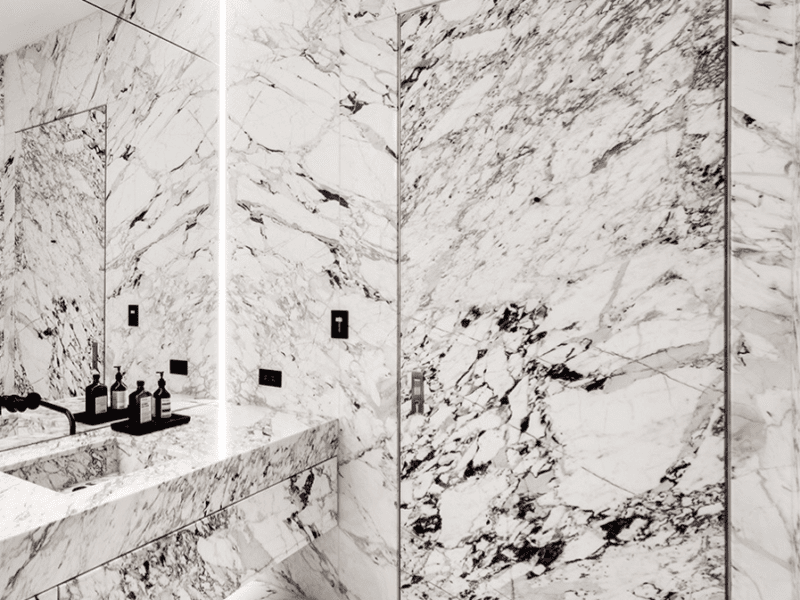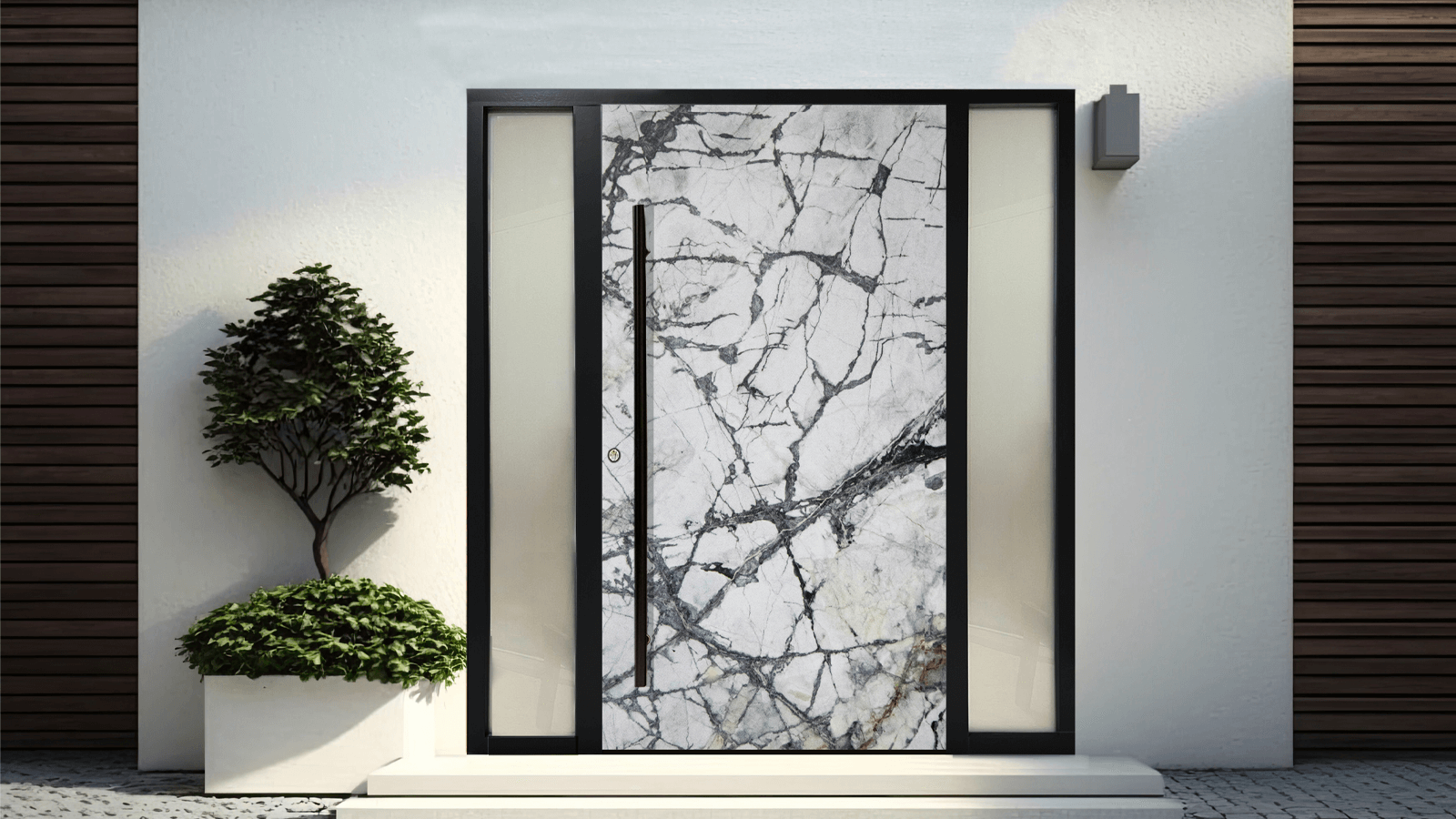From elegant marble countertops to sophisticated marble doors, this ancient, carbon-based stone has long been associated with luxury in the world of modern design. While marble remains a highly sought-after material in today’s architecture, its historical significance can be traced back to cultures spanning millennia. To truly appreciate marble’s enduring popularity and its application in contemporary designs, one need only look to its iconic use throughout history.

Marble in History
Marble has consistently symbolized wealth and prestige across various civilizations. Ancient Greek and Roman cultures were renowned for their intricately painted marble sculptures, although today, the enduring beauty of the stone is often seen in its classic white forms. Over a thousand years later, Renaissance artists found inspiration in these marble works, creating timeless monuments that honored mythological, historical, and religious subjects. Fast forward to the 17th century, and the Taj Mahal stands as a magnificent example of marble's significance—its pure white marble facade was chosen to memorialize Emperor Shah Jahan’s beloved wife, Mumtaz Mahal.
Even as modern materials like steel and concrete enabled the construction of taller, more massive structures, marble continued to play an important role in iconic landmarks. From the timeless grandeur of the Lincoln Memorial to the sleek, contemporary Oslo Opera House, marble’s presence has continued to define spaces, blending natural beauty with architectural elegance. This global and historical use of marble highlights its versatility and lasting appeal.

What Makes Marble Unique
Marble's allure can be traced not only to its visual impact but also to the unique geological process behind its creation. Marble forms when carbonate rocks undergo metamorphism—a process where heat and pressure cause the minerals within the rock to recrystallize, giving it a lustrous, glossy finish. This transformation occurs deep within the Earth, where conditions are just right to create marble’s signature smooth texture without melting the stone. Regions known for geological activity, such as Italy, produce some of the most sought-after marble in the world, prized for its strength and natural sheen.
This remarkable process explains why Italian marble, in particular, is admired worldwide. It’s the natural beauty of this stone that informs the design philosophy of companies like the Elsa Home & Beauty Group, whose creations highlight the luxurious and organic qualities of premium marble.
Elsa Home & Beauty Marble Doors
At Elsa Home and Beauty, the design of marble doorways is a celebration of the stone’s innate beauty. Like fingerprints or snowflakes, each piece of marble tells a unique story, with distinct veining patterns that are impossible to replicate. These patterns are formed over time, influenced by the flow of water through the stone, ensuring that every marble piece is one-of-a-kind. As such, each marble fixture carries the essence of its origins—an artistic relic that links the ancient energies of the Earth with contemporary design.
Elsa Home & Beauty’s attention to detail in craftsmanship emphasizes the natural flow of marble veining, allowing each piece to function as a signature of the stone itself.

The Powerful Style of Marble Doorways
Marble’s reputation for grandeur in architecture and decoration extends beyond floors, countertops, and pillars to one of the most important features in any space: the doorway. While marble has long been used to elevate spaces, marble doors and entryways hold a unique place in the material's storied legacy.
The intricate veining found in premium marble creates a natural design that enhances the overall aesthetics of doors and archways. The stone’s ability to blend organic patterns with a timeless elegance brings a sense of refinement to any setting. Whether in sleek, modern minimalism or the intricate designs of baroque and rococo styles, marble is ideal for creating striking entryways that make a statement.
When used for doors, marble serves not only as a barrier but as a symbol of elegance, gracefully marking the transition between different spaces in life. The juxtaposition of marble’s creation process—born between the Earth’s surface and molten core—reflects the balancing act between interior and exterior spaces, creating a harmonious boundary in architectural design.
Elsa Home & Beauty’s signature entryway options exemplify this balance, blending seamlessly with both interior and exterior spaces to create a cohesive, holistic design. The carefully crafted marble doors help define the flow of space, creating a boundary that is both beautiful and functional.





